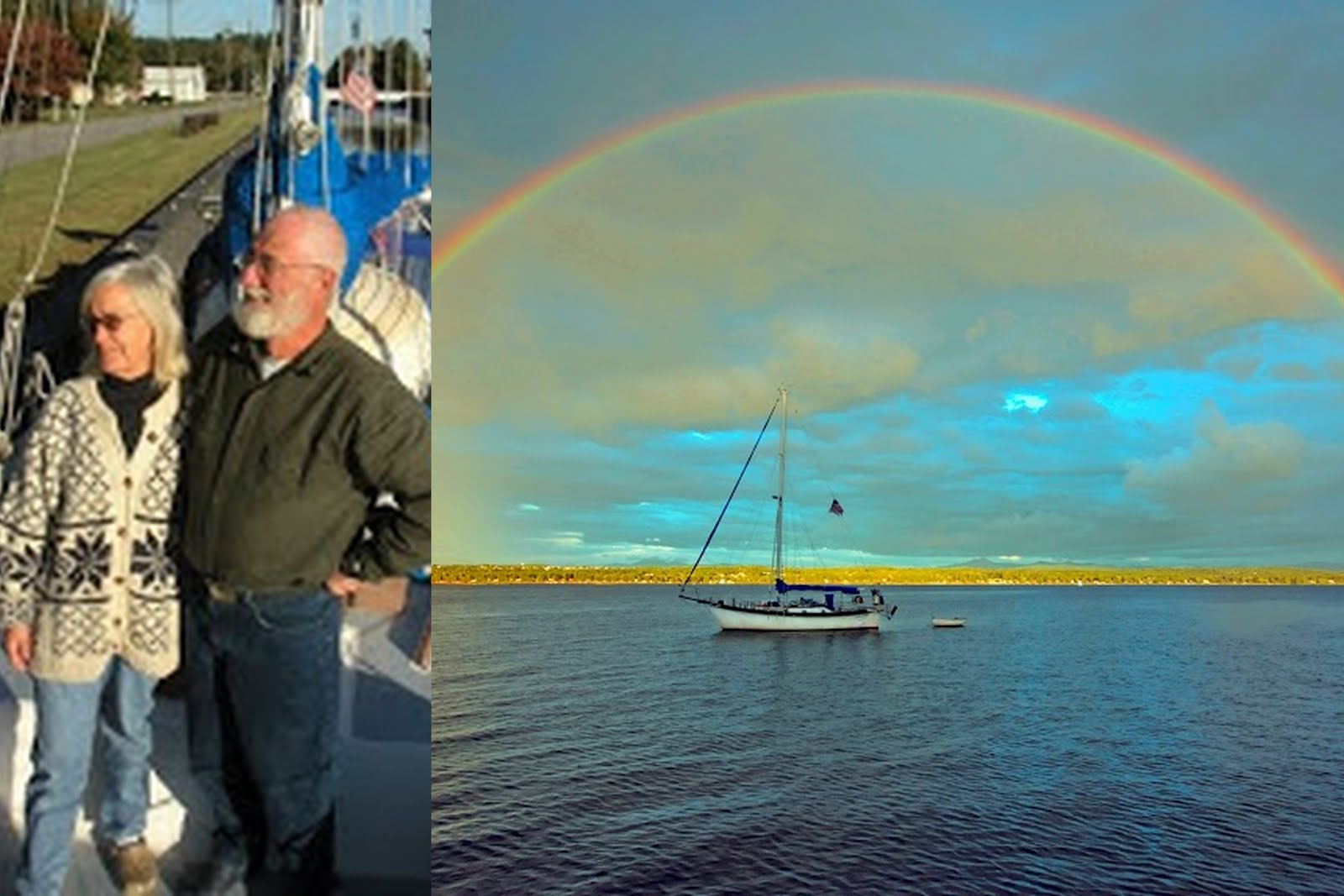35 54.42 N 075 38.63 W
People not used to boats, especially sailboats, have a hard time understanding why the captain is so fussy about which lines (ropes) go over or under which. Believe me, once you do understand it is very important. Often there is one and only one correct way to route a line. No compromises nor approximations can be allowed.
The most important of all over and under rules is your own body. If you lay or sit on the deck you must never ever lay or sit on top of any line (rope). The reason is that line may suddenly come into play and be pulled taught. If you're on top of it you could be launched into the air, or worse thrown overboard. An anchor line could loop around your foot and pull you overboard and down to the bottom of the sea. That certainly earns being deemed important.
Other cases can be more confusing. Guests frequently volunteer to help put the sail cover on to be helpful. They're less than pleased to hear me orderer, "No not that way. Route the cover under all the halyards and over all the lazy jacks. " What the heck? Who knows what all that nautical lingo means anyhow? I can make it a bit easier by saying, "Route it under all the ropes with colored markings and over the white ropes." That avoids nautical lingo but it doesn't seem to help much; guests are equally confused.
The problem repeats everywhere. "That line goes under the top lifeline and over the lower one." Huh?
By the way, for the benefit of landlubbers. A rope is a rope when it is on the shelf or stored in a locker. As soon as it is put into use it becomes a "line." Each line has a specific name. That's so that we can communicate accurately in the dark, when upside down, backward and with our eyes closed. Ditto with port/starboard instead of left/right. If you're in the cockpit and someone below shouts, "Where's the toilet paper," you can't offer left or right as an answer if you don't know which way the person is facing.
A related problem to over under is working versus bitter end of a rope. Let's say you hold the anchor line in your hand. The working end of the line is attached to the anchor, the loose end of the line is called the bitter end. Never mixing the two up is important. For example, to tie the anchor line to a Sampson post, you take the bitter end, wrap it around the post 3 times, then wrap it around twice more with a half loop each time, forming a clove hitch. If you did the same thing with the working end it is just as easy to tie and results in the same knot on the post. However, as the anchor tugs on the line overnight it will pull that knot so tight that it may take you half the day to work it loose.
Women do many things as well or better than men (Oh God, don't get me started on that.) It is said however that they are not as good at spatial visualization. In this context, it means the mental talent to never confuse the over/under or working/bitter end rules, even in the dark, in a storm, when your tired, with your eyes closed, and behind your back. Believe me, there will be times when such gymnastics are necessary. From what I've observed, it seems to be true. It is much more difficult to coach a woman (including Libby) to route the lines over/under working/bitter correctly. She learns the rules, but then gets confused 1/4 of the time and does it wrong. Oh well, since that is just about her only fault, I'll keep her.
By the way. We had a really pleasant sail today. Pamlico Sound is delightful when it isn't stormy. We made it from Ocracoke to Manteo in just over 7 hours. We came at low tide and yet saw no water depths less than 7.5 feet.





Ok, ok, ok, but where does being left-handed fit in?!? If I remember correctly, that was a key drawback when trying to learn the "ropes" :)
ReplyDelete"We made it from Ocracoke to Manteo in just over 7 hours. We came at low tide and yet saw no water depths less than 7.5 feet."
ReplyDeleteWow. That's good. A couple of years ago my wife and I sailed in that area. In some spots we were touching bottom with the rudders of a Hobie-cat! Of course, we didn't have a depth sounder. ;-)